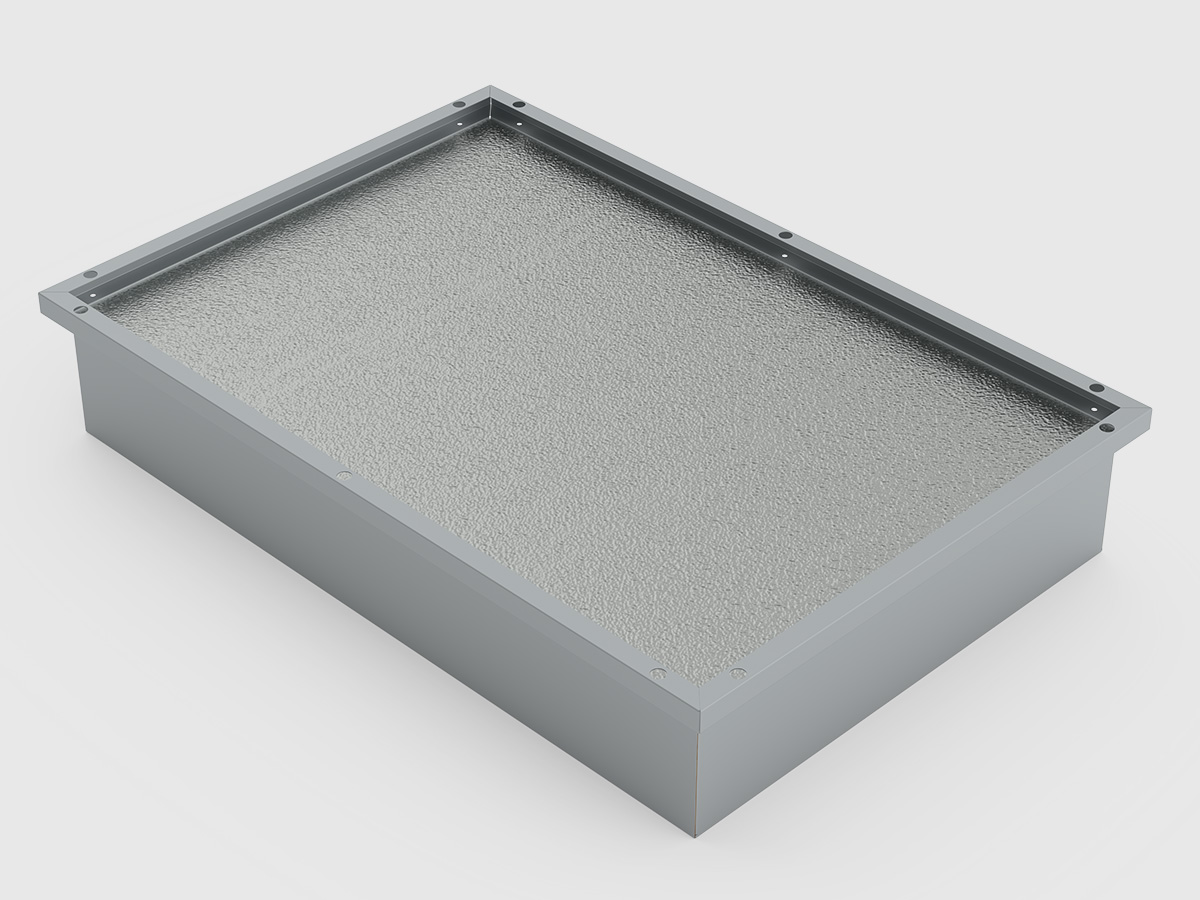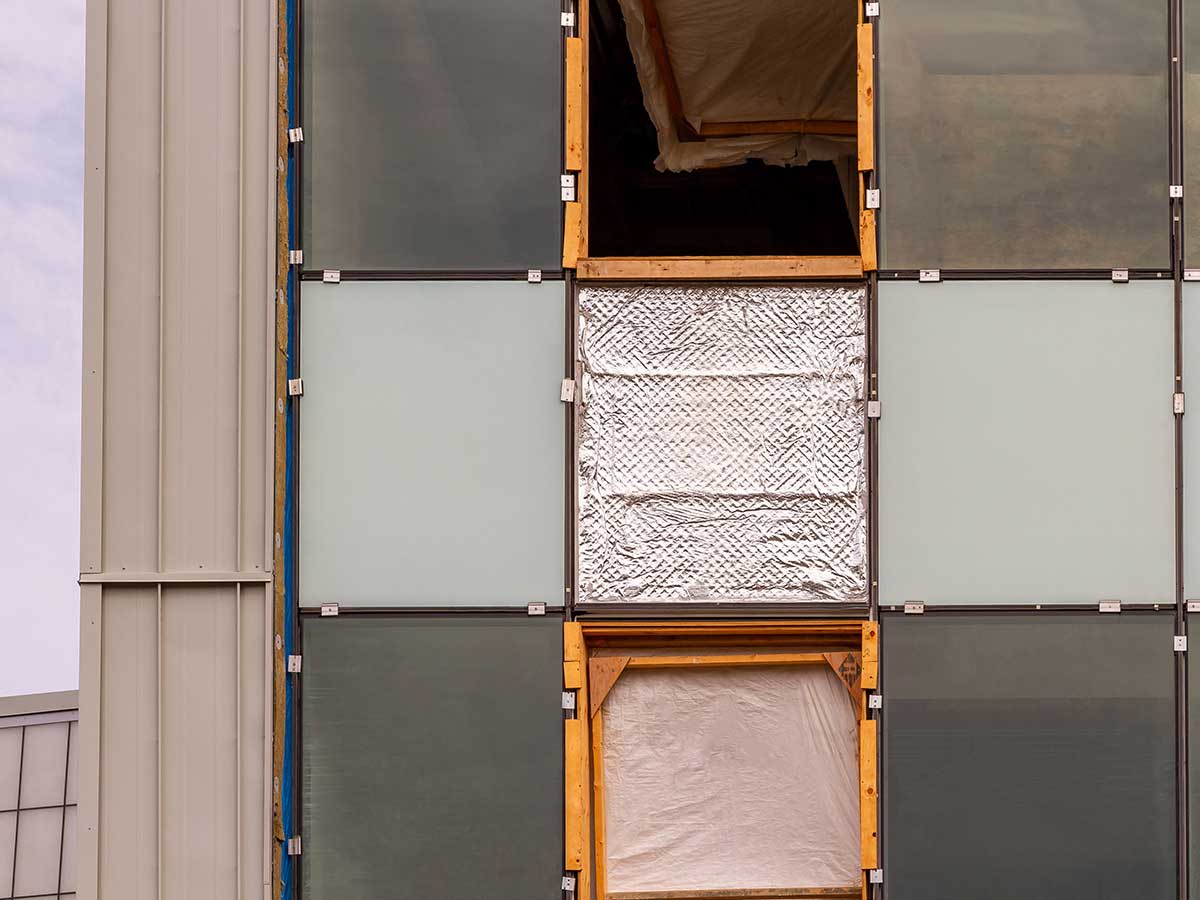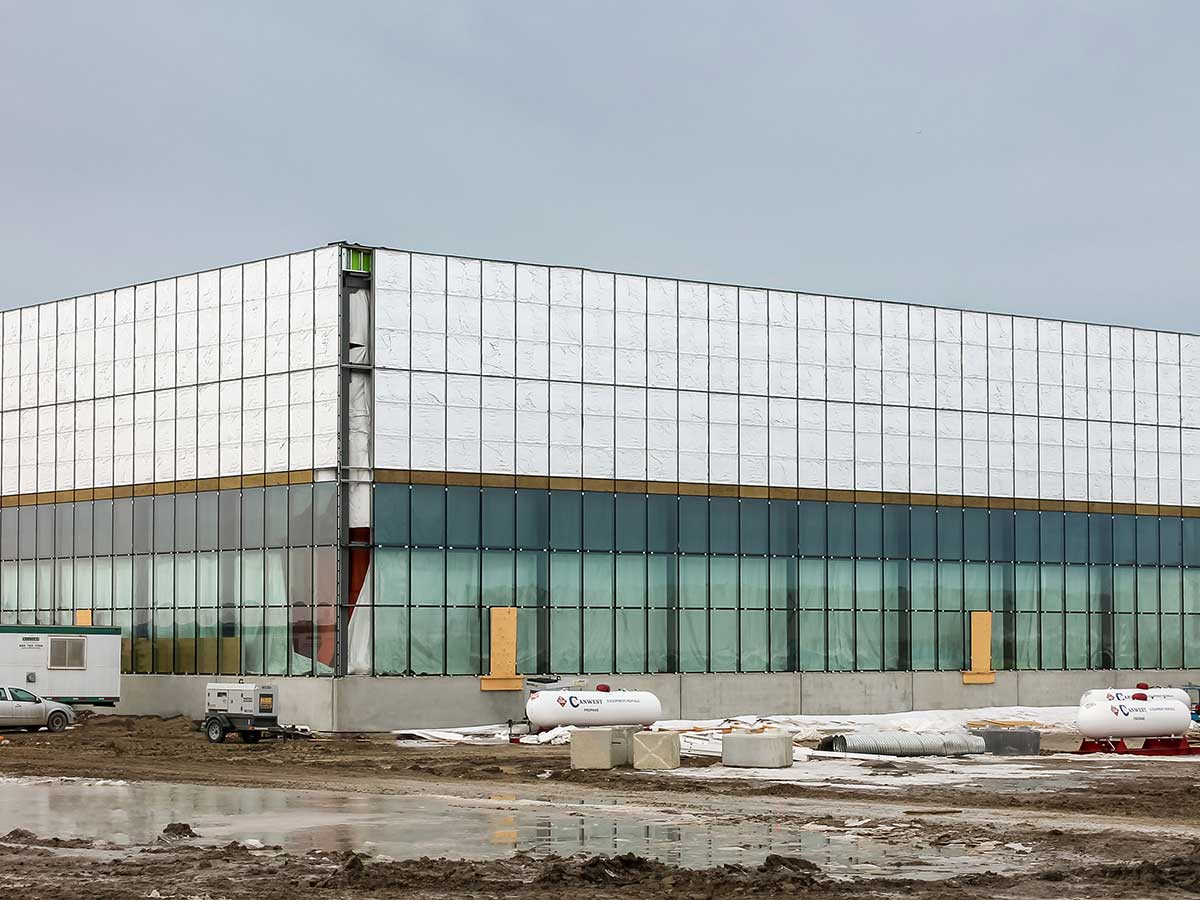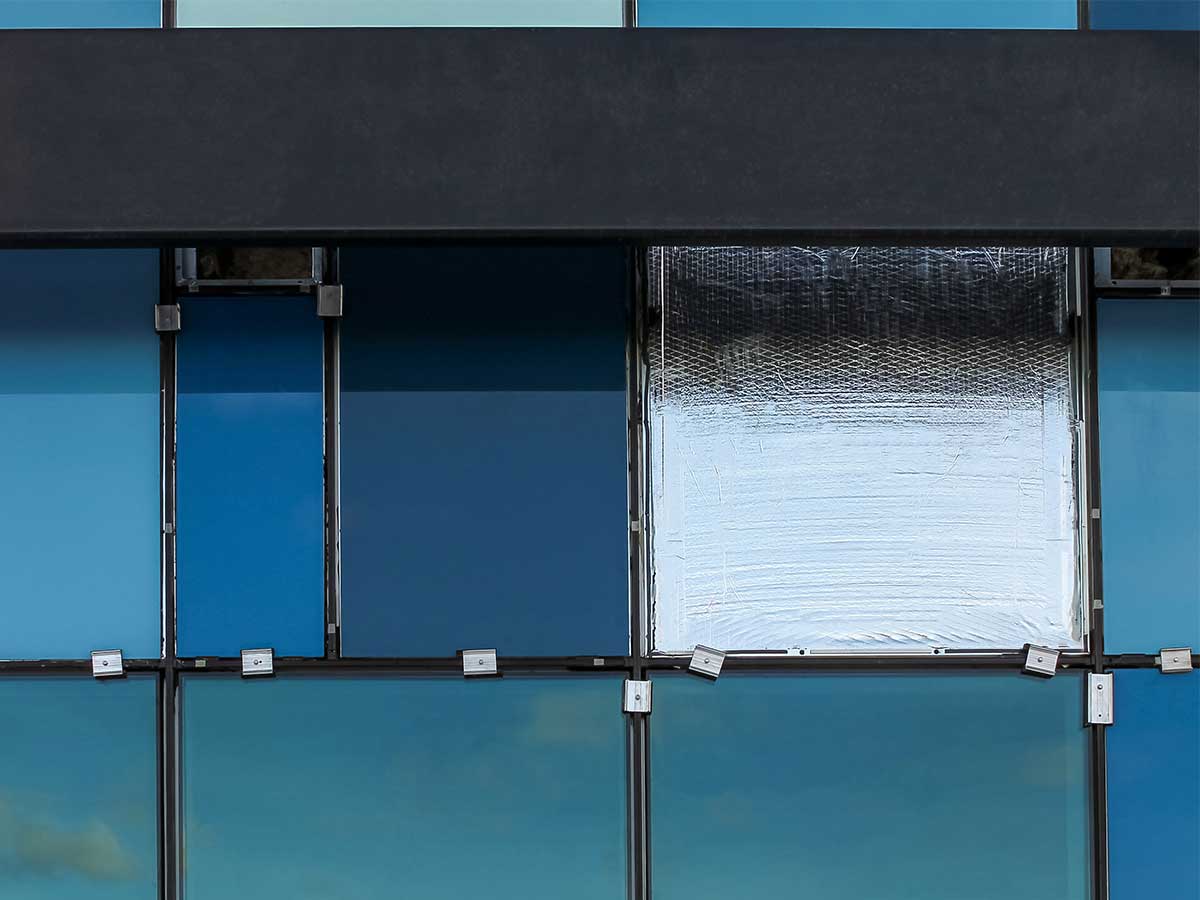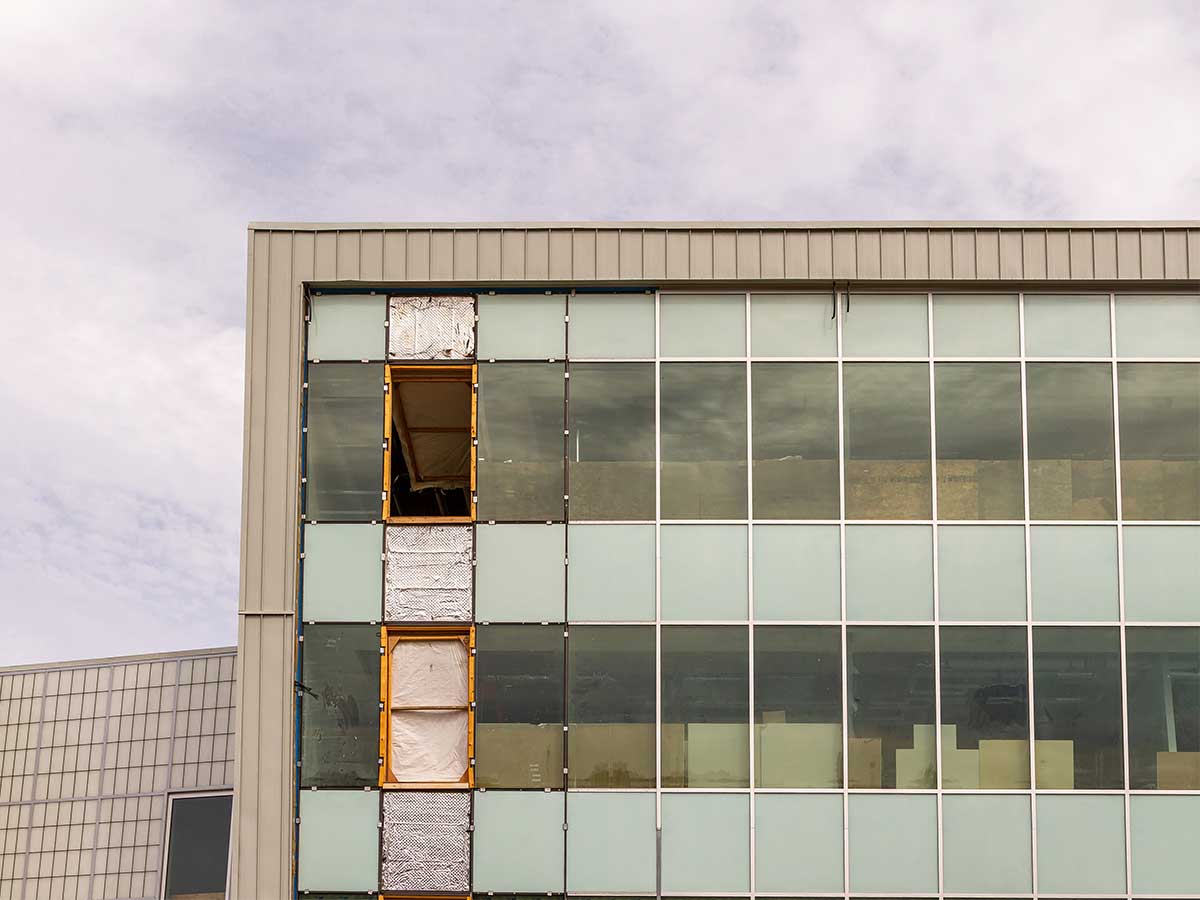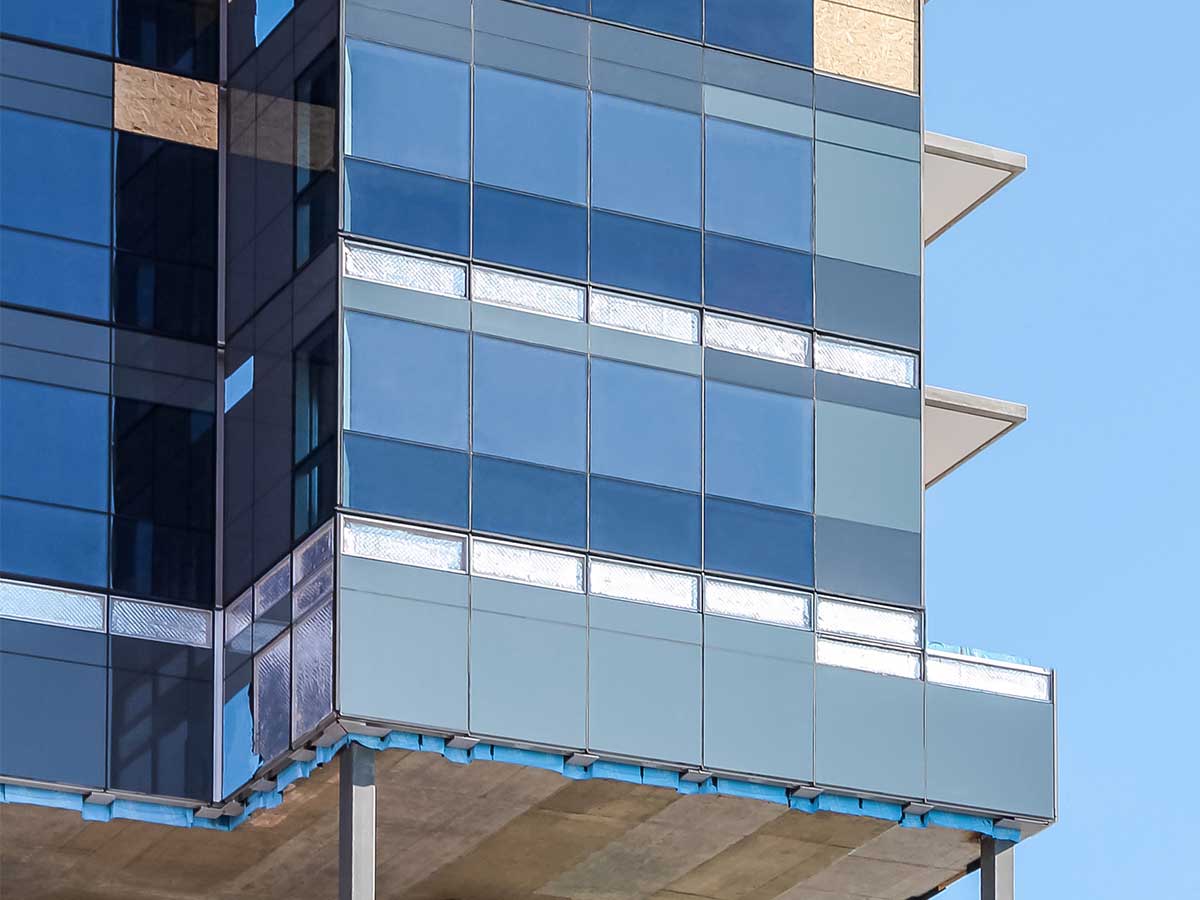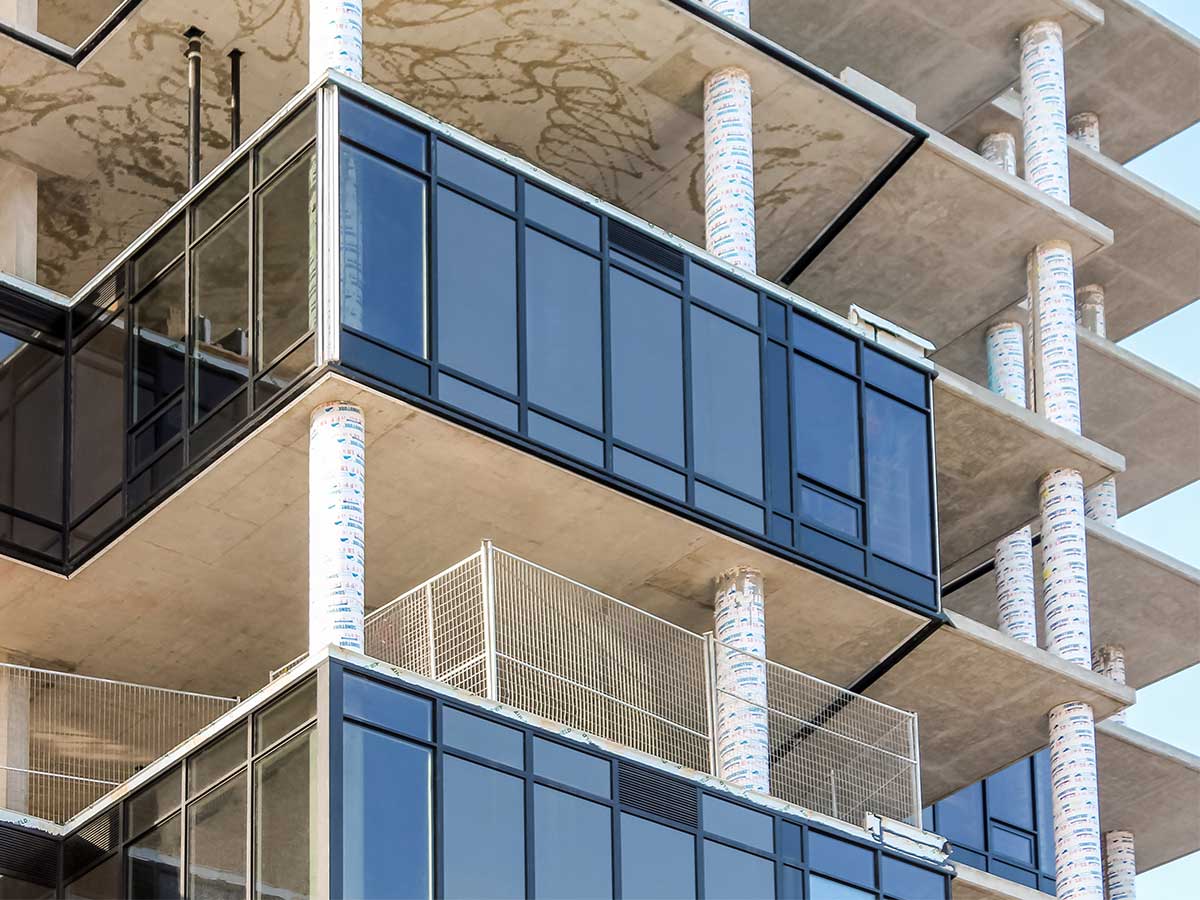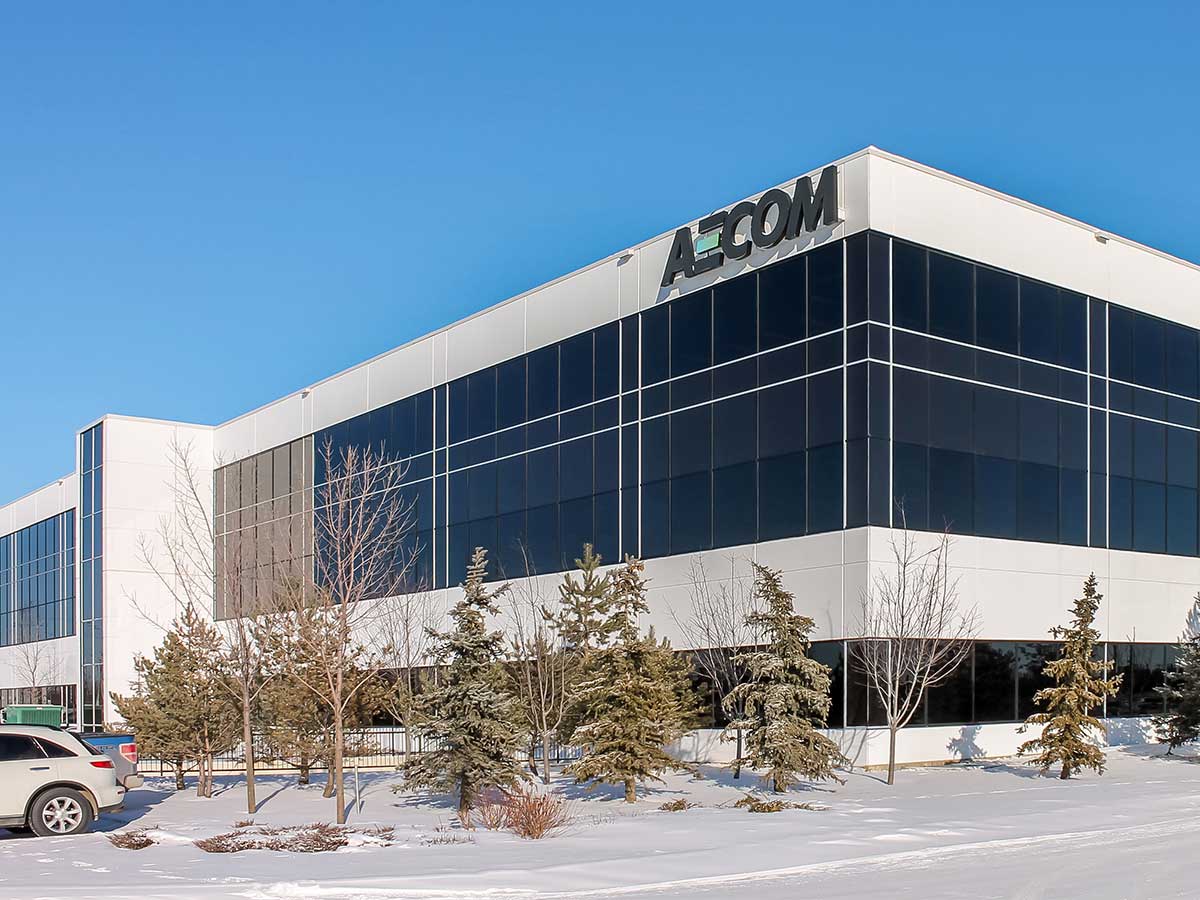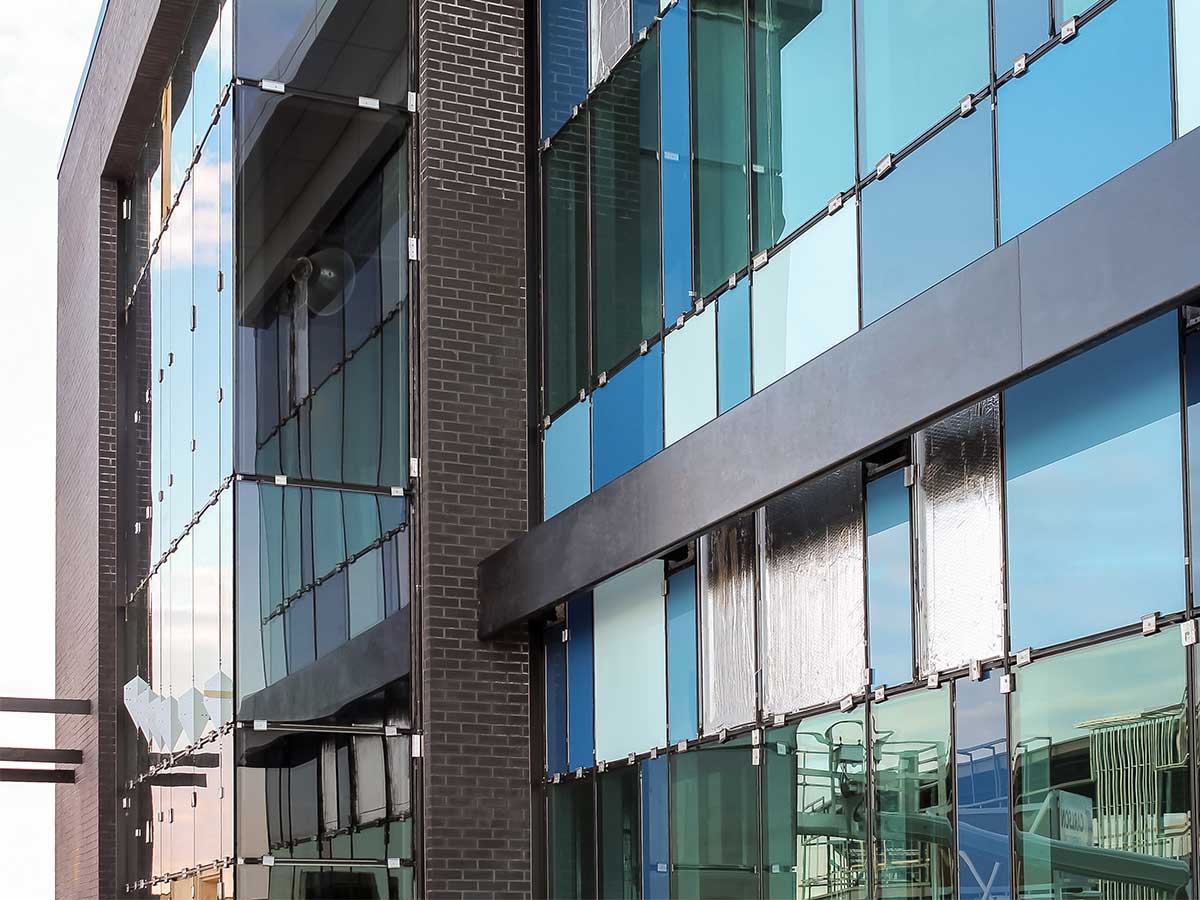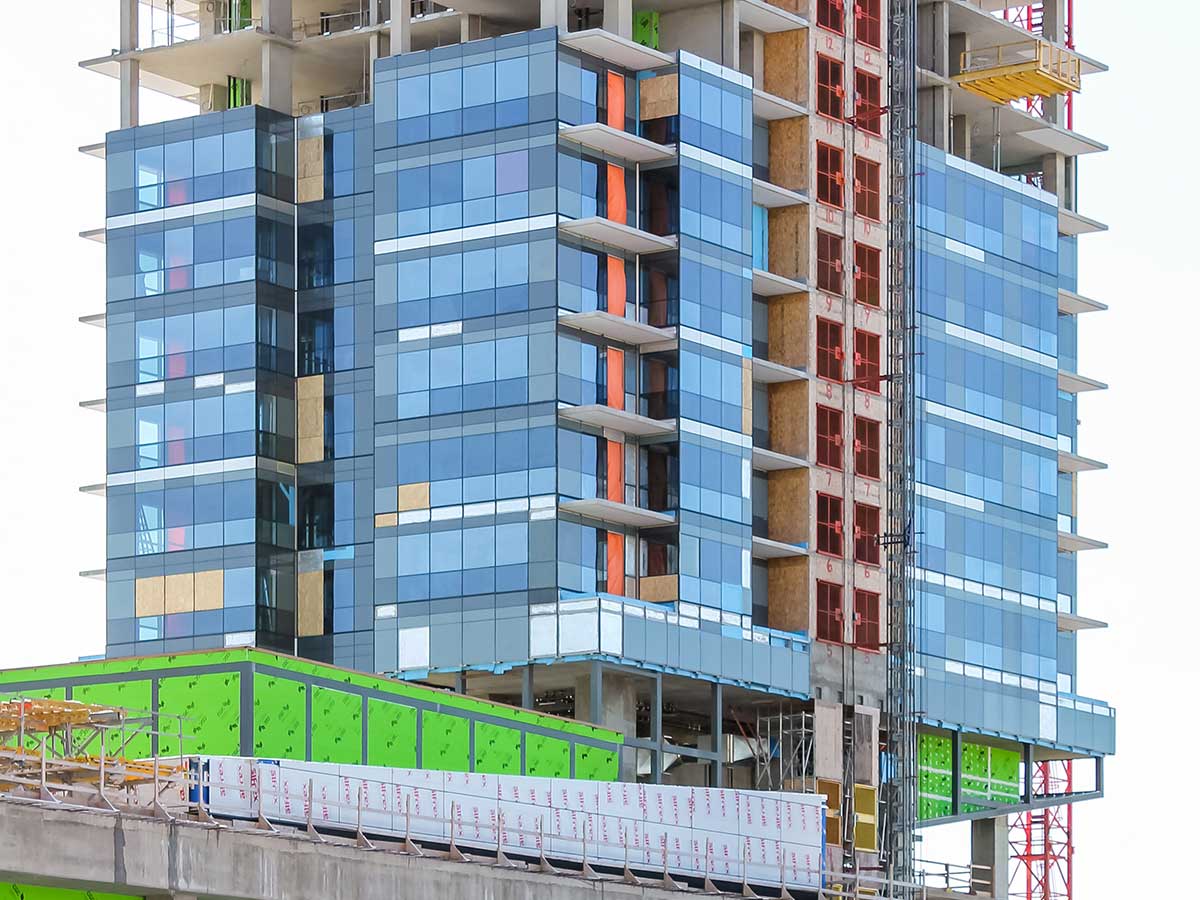Automated efficiency takes EnvaTherm® insulated back pans and curtain-wall engineering to a new level. Innovation in foam delivery technology yields soft, even, self-sealing insulation that provides a competitive R-value for consistent, real-world performance. Unlike fibrous insulation, the insulation forms a self-sealing bond to the metal back pan shell so there is no risk of shifting/sagging or convective looping.
EnvaTherm
ENVATHERM - INSULATED BACK PANS
FOAM DELIVERY TECHNOLOGY - CERTIFIED AIR BARRIER
EnvaTherm® insulated back pans are used in curtain wall systems in conjunction with opaque glass panels or architectural metal panels for areas that do not require transparent glass.
FEATURES
-
- Local & fully certified manufacturing process;
- Fire-tested (CAN/ULC S134) for multi-storey non-combustible construction. See the full fire test here;
- Pre- and post-consumer recycled content;
- No VOC’s, foam insulation is 100% water-blown;
- Will not sustain mold growth;
- Up to 50% lighter than competing products;
- Lean manufacturing and precision equipment reduce waste and lead times.
CERTIFICATES
-
- Constructed in accordance with Intertek Design Listing LEI-IMWP 25-01
- Spec. ID 28934
- Inspections four times a year
THE AIR SEAL & ADHESION CAPABILITIES
-
- Factory-applied low-density foam insulation which prevents heat drumming and whistling
- Insulated for both air and water.
- No loss of thermal performance due to convective looping.
- Certified air barrier material ASTM E 2178-03 Intertek Project 3181312
ENVATHERM’S LOW WEIGHT AND HANDLING
-
- Commonly described as “light as air”
- In combination with our panels, they are up to 50% lighter than competitive fibrous products
- More cost-effective for handling, shipping, and installation
WASTE & ENVIRONMENTAL CONSIDERATION
-
- Pre and post-consumer recycled metal components.
- Foam is 100% water-blown, uses no synthetic blowing agents or synthetic blowing agents, and is PBDE free
- Near 100% utilization of of on-site materials
- Safe and stable after curing
- Will not support growth of mold (ASTM C1338 (2008) Standard Test Method for Determining Fungi Resistance of Insulation Materials and Facings, Intertek Canadian Project Number G100033767)

